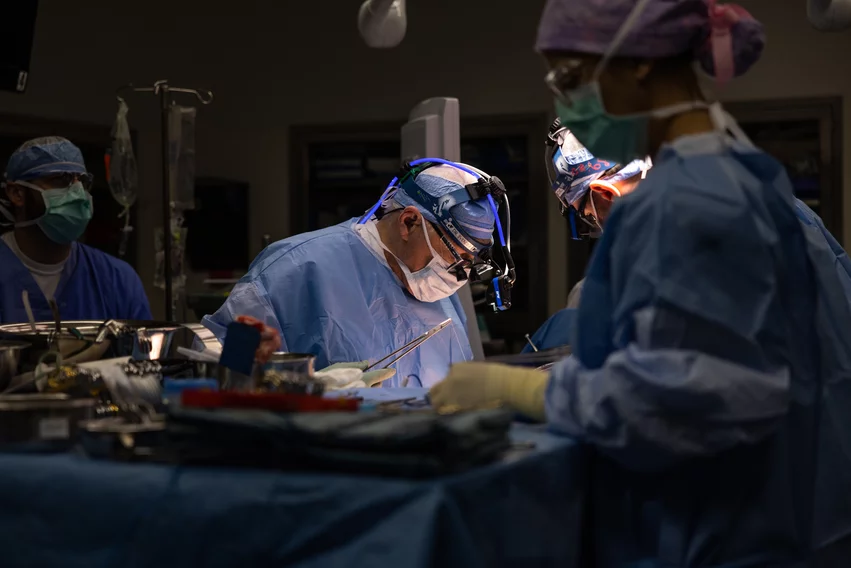Q&A: Cleveland Clinic’s Lars Svensson previews AATS annual meeting
The American Association for Thoracic Surgery (AATS) hosts its 104th Annual Meeting April 27-30, bringing thousands of surgeons, cardiologists and other healthcare providers together in Toronto to examine the latest in technological breakthroughs and patient management strategies.
AATS President Lars Svensson, MD, PhD, chairman of the Sydell and Arnold Miller Family Heart, Vascular & Thoracic Institute at Cleveland Clinic, spoke with Cardiovascular Business to preview the three-day event. He also discussed the relationship between surgeons and interventionalists, current trends in cardiothoracic surgery and much more.
Click below for the full conversation:
Cardiovascular Business: What were some your biggest goals when putting together this year’s AATS meeting?
Lars G. Svensson, MD, PhD: There were some gaps in cardiothoracic surgery management that we needed to address. For example, surgeons are managing more complex patients and doing many more complex operations now, whether in cardiac or thoracic surgery, so we put together a Complex Valve Scenarios symposium for that Friday. We’re bringing in a lot of experts and we’re going to talk about how to manage the complex patient.
Another gap I wanted to address was structural heart disease. We’ve had structural heart cardiologists join AATS, and we also have number of members who are trained in structural heart, so it was time we highlighted that topic and gave it a platform.
Also, I wanted to make sure we are highlighting things that our members can do to become better surgeons. We have a number of sessions on how to manage complex issues and how to think about very technical aspects of these operations.
Finally, two words that are very important to AATS are “leadership” and “vision.” For this year’s program, I chose the best people I know to talk about various aspects of leadership and how organizational behavior and strategy can be integrated with a leader’s vision. You’ll notice that topic running throughout this year’s presentation schedule.
What can you tell me about the guest speakers at this year’s meeting? I did notice Arnold Schwarzenegger and some other big names will be involved.
Arnold has shared some of his health journey on social media. He is just a fantastic person, and we’re very fortunate he agreed to join us. Patrick Soon-Shiong, probably the most successful physician entrepreneur ever, will join us as well. He is a part owner of the Los Angeles Lakers and owns the Los Angeles Times.
Also, I will be interviewing Susan Galbraith, who is one of the most gifted physicians with AstraZeneca and has worked a lot on new drug development for them, and a panel of healthcare leaders will try to tease out what they see in the future of healthcare.
AATS received more abstract submissions for the annual meeting this year than any previous year. What do you think is behind this rise in enthusiasm?
Yes, will have more than 700 podium presentations and more than 200 poster presentations at this year’s annual meeting. There is a great interest in structural heart and how we can work within that space as a specialty. In addition, thoracic surgeons have a lot to be excited about right now as far as new treatments in areas like lung cancer and esophageal cancer.
Also, the big drug companies are very interested in the various agents that can prolong the lives of patients with lung and esophageal cancer, so we have a number of sessions focused on that specific area.
Two other areas our members are excited about right now are new developments within perioperative care and congenital heart disease. This resulted in a lot of abstracts being submitted in those areas as well.
All of us are very enthusiastic about the future of this specialty. We just have to change and adjust to new things that are happening.
Are interventional techniques discussed much at AATS meetings? I know interventionalists have their own specific societies and gatherings, but there must still be a lot of overlap there.
Oh yes. Cardiovascular care has become so much more team-based, with heart valve teams assessing what is best for each patient. The same thing has happened in vascular and endovascular surgery.
Remember, for all transcatheter aortic valve replacement (TAVR) procedures, a cardiac surgeon has to be involved in assessing the patient and being a part of the procedure. I think we are going to potentially see that for tricuspid valve and mitral valve replacements as well, because a lot of those are high-risk procedures.
At Cleveland Clinic, what trends have you been seeing in patient care? For example, is TAVR becoming more popular among clinicians?
While there has certainly been a big rise in TAVR, there are still lots and lots of SAVRs happening as well. At Cleveland Clinic, TAVR volumes seem to have actually plateaued after peaking a few years ago. We did 7,770 cardiothoracic operations last year, and 5,014 were unique cardiac surgery operations on our main campus, so we are seeing many more complex operations right now.
Our strategy at the Heart, Vascular & Thoracic Institute has been what I think you would see at other institutions—we are involving artificial intelligence and machine learning much more in patient care. Secondly, we are concentrating on doing more and more of the less invasive procedures, whether that’s something like TAVR or just a surgical procedure done in a less invasive way. Third, our strategy is to be able to manage more and more of these complex patients who are referred to us—this includes heart and lung transplantation patients, and those areas are very important for the specialty to keep up with so we can deliver the best care for our patients. Finally, we are seeing many more devices being used right now, particularly in patients with cardiogenic shock, and I think we will see more of those in the future.
Click here for more details about the AATS 104th Annual Meeting.


